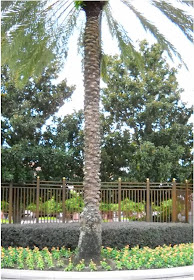El bonsai es un arte cuya historia y filosofía probablemente se originó en la India. Se cree que mucho antes de su aparición en China, pequeños árboles con podas a manera de topiarios fueron dedicados por los hindúes como ofrenda en los altares budistas. Fueron los monjes budistas quienes llevan a Japón la cultura China y con ella el bonsai.
Bonsai significa “árbol bandeja” o Petsuai, es una tradición de siglos que aún hoy día sigue siendo un arte, una filosofía de vida y tiene admiradores en todo el mundo ya que utiliza en su composición el triángulo cielo-hombre-tierra.
Características del bonsai:
Tamaño: puede clasificarse en grandes (Omono Bonsai), medianos (Chumono Bonsai), pequeños (Katede-Mochi-Bonsai) y miniatura (Mame).
Diseño y balance: es generalmente asimétrico y usa número impar de elementos. El balance es el equilibrio de la composición para lograr una armonía visual. Se logra mediante la colocación de las ramas y la inclinación del tronco.
Especie: las especies que se utilizan para bonsái varían ampliamente, el común denominador consiste en que la planta debe ser entrenada para bonsái. La planta seleccionada para bonsái, debe tener algunas condiciones ideales como son: raíces distribuidas en todas las direcciones para favorecer la estabilidad de árbol, tronco leñoso o semi-leñoso, para dar aspecto de vejez, ramas bajas, entrenudos cortos, hojas pequeñas, flores y frutos pequeños, ciclo de vida largo.
Cada especie de planta tiene su propia arquitectura, esto no se debe perder de vista al cultivar un bonsái, ya que con este arte podemos modificar la forma, sin embargo, la arquitectura original de la especie de alguna manera prevalecerá. Algunas de las especies que se pueden utilizar son:
AZALEA (Rododendrom indicum)
AZAHAR DE LA INDIA (Murraya exotica)
CAMELIA (Camellia japonica)
CARIAQUITOS (Lantana)
CASUARINA (Casuarina equisetifolia)
CEPILLO DE BOTELLA (Callistemoon speciosus)
FICUS HIGUERA (Ficus carica)
GRANADO (punica granatum)
JADE HOJA ENANA (Crassula)
OLIVO (Olea europea)
TAMARINDO (Tamarindus indica)
TAPARA-TOTUMO (Crescentia cujete)
UVA DE PLAYA (Coccoloba uvifera)
Estilos de bonsai: existen cinco estilos básicos del bonasí, que son: formal erguido, informal erguido, inclinado, semi-cascada y cascada. El estilo se define dependiendo de la inclinación del tronco con relación a un eje imaginario. A partir de los estilos básicos han surgido muchos más, que son combinaciones de éstos.
Formal erguido
Mixto inclinado-llorón
Doble tronco
Triple tronco
Mixto
Soplado por el viento
Retoño
Bonsai is an art which history and philosophy originated in India. It is believed that long before its appearance in China, small trees prunned as topiaries were dedicated by the Hindus as offerings in Buddhist altars. It was the Buddhist monks who carry the culture of bonsai to China and Japan.
Bonsai means "tray tree" or Petsuai, with centuries of old tradition that even today remains as an art, a philosophy of life with fans around the world. In its composition the triangle sky-man-land is used.
Basic aspects of a bonsai:
Size: can be classified into large (Omoño Bonsai), medium (Chumono Bonsai), small (Katede-Mochi-Bonsai) and miniature (Mame).
Design and balance: the design is usually asymmetric and uses odd number of elements. By the way, balance refers to the composition and visual harmony. Is accomplished by placing branches and trunk with inclination.
Species: the species used for bonsai vary widely; the common denominator is that the plant should be trained for bonsai. The plant chosen for bonsai should have some ideal conditions such as: roots spread in all directions, in order to enhance the stability of tree trunk woody or semi-woody, to give it to old age, low branches, short internodes, small leaves, flowers and small fruit, long life cycle.
Each plant species has its own architecture, it should be considered when growing a bonsai, since this art can modify the shape, however, the original architecture of the selected species will always tend to appear. Some species that can be used are:
AZALEA (Rododendrom indicum)
ORANGE BLOSSOM OF INDIA (Murraya exotica)
CAMELLIA (Camellia japonica)
CARIAQUITOS (Lantana)
CASUARINA (Casuarina equisetifolia)
BOTTLE BRUSH (Callistemoon speciosus)
FIG TREE (Ficus carica)
POMEGRANATE (Punica granatum)
JADE LEAF DWARF (Crassula)
OLIVE (Olea europea)
TAMARIND (Tamarindus indica)
TAPARA-TOTUMO (Crescentia cujete)
SEA GRAPE (Coccoloba uvifera)
Bonsai Styles: there are five basic styles of bonsai are: formal upright, informal upright, slanted, semi-cascade and cascade. The style is defined depending on the inclination of the trunk with respect to an imaginary axis. From the basic styles are there many more that are combinations of these.
Each plant species has its own architecture, it should be considered when growing a bonsai, since this art can modify the shape, however, the original architecture of the selected species will always tend to appear. Some species that can be used are:
AZALEA (Rododendrom indicum)
ORANGE BLOSSOM OF INDIA (Murraya exotica)
CAMELLIA (Camellia japonica)
CARIAQUITOS (Lantana)
CASUARINA (Casuarina equisetifolia)
BOTTLE BRUSH (Callistemoon speciosus)
FIG TREE (Ficus carica)
POMEGRANATE (Punica granatum)
JADE LEAF DWARF (Crassula)
OLIVE (Olea europea)
TAMARIND (Tamarindus indica)
TAPARA-TOTUMO (Crescentia cujete)
SEA GRAPE (Coccoloba uvifera)
Bonsai Styles: there are five basic styles of bonsai are: formal upright, informal upright, slanted, semi-cascade and cascade. The style is defined depending on the inclination of the trunk with respect to an imaginary axis. From the basic styles are there many more that are combinations of these.
ladoctoradelasplantas@hotmail.com














































